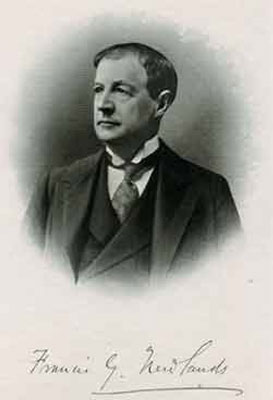The History of Chevy Chase, Maryland
Chevy Chase may trace its name to the “chaces,” or hunting grounds, in the Cheviot Hills along the Scottish-English border. Or, the name may be derived from the French word "chevauchee," used in medieval Scotland and England to describe horseback border raids. The English and Scots met in a bloody clash over such hunting grounds in 1388 -- a battle immortalized in the famous ballads of Battle of Otterbourne and Chevy Chase.
In 1725, Colonel Joseph Belt received a patent for 560 acres of land in colonial Maryland, just northwest of the future Washington, DC. He named it “Cheivy Chace.”
The area remained farmland until the late nineteenth century, when it became the nucleus of the streetcar suburb that retained the name and grew to become today’s Chevy Chase.

Two 19th-century entrepreneurs, Francis G. Newlands and William Stewart, developed Chevy Chase as a “home suburb for the nation’s capital” in the late 1800s, when railroads and electric streetcars made it possible for city dwellers to live away from their place of work. Newlands was heir to the Comstock Lode fortune and a future representative of Nevada in both houses of the U.S. Congress. Stewart was a U.S. Senator from Nevada. Together they quietly bought up several thousand acres along the route that would become Connecticut Avenue, and transferred the land to their newly-formed Chevy Chase Land Company. The Land Company proceeded to extend Connecticut Avenue from Calvert Street to Chevy Chase Lake, an artificial lake and amusement park built by the Land Company to attract residents to the new suburb. Along the new avenue, they constructed a streetcar line.
Chevy Chase’s founders envisioned a distinctive community of handsome homes in a park-like setting, featuring broad streets, sidewalks and parks. There would be no alleys reminiscent of the crowded city, and businesses would be located only at its boundaries. They provided every municipal convenience -- water, electricity, schools, churches, recreational facilities -- and connected it all to the city of Washington with streetcar service.
 Life in early Chevy Chase revolved around the streetcar line. Commuters rode it to and from work in the city. Children rode it to and from school. The streetcar “skipper” ran errands in the city for Chevy Chase residents and delivered groceries and packages to green boxes at several corners along Connecticut Avenue. And residents of both the city and the suburb rode the streetcar to Chevy Chase Lake to picnic, fish, ride the carousel and dance to the music of Eubie Blake and John Philip Sousa.
Life in early Chevy Chase revolved around the streetcar line. Commuters rode it to and from work in the city. Children rode it to and from school. The streetcar “skipper” ran errands in the city for Chevy Chase residents and delivered groceries and packages to green boxes at several corners along Connecticut Avenue. And residents of both the city and the suburb rode the streetcar to Chevy Chase Lake to picnic, fish, ride the carousel and dance to the music of Eubie Blake and John Philip Sousa.
The old farming byways of Jones Mill Road, Bradley Lane, and Brookeville Road are heavily traveled roads today. The site of Chevy Chase Lake is now a small patch of woods just south of the tall 8401 Connecticut Avenue office building. But the character of the community has survived intact, despite technological advances and the pressures of urban sprawl. Because of both the logic and the charm of the original plan, Chevy Chase today remains substantially what its founders envisioned -- a tranquil yet convenient community away from the bustling city.
Recent History
In December 2014, Commissioner Gary Thompson, then a member of the Advisory Neighborhood Commission (ANC) 3G representing Chevy Chase, DC, proposed a resolution to rename the fountain in Chevy Chase Circle. The Chevy Chase Historical Society takes no position on this resolution, nor do we refute or deny any of Senator Francis G. Newlands’s racist words or actions that are a matter of public record and have been well-documented over the years.
CCHS’s sole interest in this matter is to help residents and decision-makers access the most accurate and authoritative information on the topic. In that spirit, we prepared a letter commenting on Mr. Thompson’s proposal, correcting certain factual errors in his proposed Resolution, and placing Senator Newlands in historical context. We invite the public to read that letter by clicking HERE.
This letter includes a bibliography, and we encourage everyone interested in reading these texts as well as any additional materials in our archives to visit the CCHS Archive and Research Center, 8401 Connecticut Avenue, Suite 1010, Chevy Chase, MD 20815. The Archive and Research Center is open from 10am to 12pm and 1 pm to 3 pm without appointment on Tuesdays; members of the public are encouraged to drop by during those hours, or to contact us for an appointment at another time.


